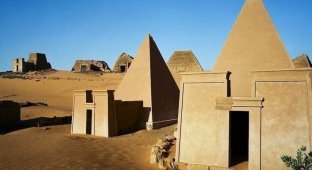The Nabataeans built amazing cities in the ancient desert (10 photos)
In the photo - the ancient city of Hegra. Built in the 1st century BC. e., is located in the territory of modern Saudi Arabia. 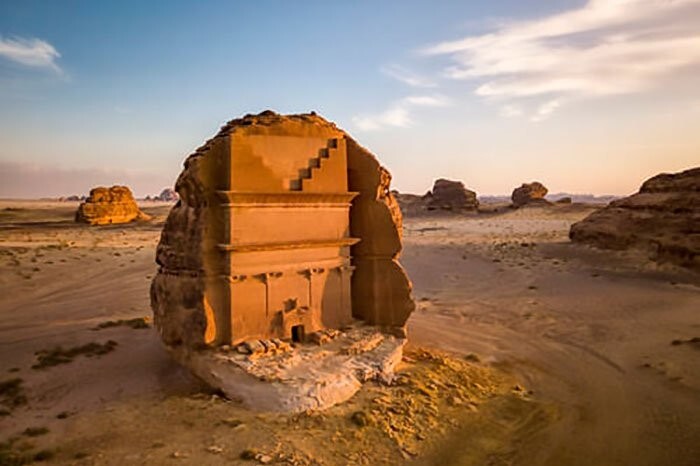
Once there was a full-fledged city, now only a complex of burials remains.
Hegra (second name - Madain Saleh), is located in the desert. But in ancient times it was a prosperous city. It was located on the key international trade route. 
Two rich states - Ancient Egypt and the Seleucids (the Syrian kingdom founded by Alexander the Great) were active trade, and caravan routes ran through these lands.
The city was built by the so-called Nabataeans. 
Nabataean kingdom
A group of Arab tribes began to unite around III century BC. And the Nabataean kingdom was created, which located on the territory of modern Jordan, Israel, Syria and Saudi Arabia.
The capital of the kingdom was the famous Petra. 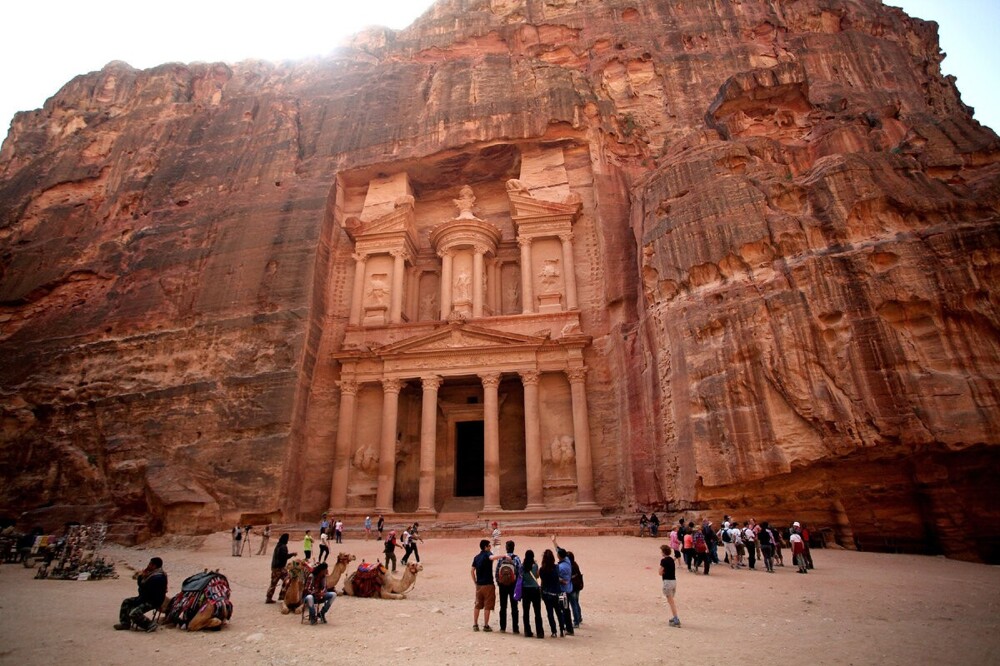
Petra and Hegra were conveniently located in the middle of the caravan route through the hot Arabian desert. Traders found here long-awaited haven. Replenished food and water supplies.
The Nabataeans were considered very efficient traders. Except "buy-sell" they also built a tax policy so that encourage merchants to pass through their cities. On other routes with merchants collected much more taxes. And they became economically favorably passes through Hegra and Petra. 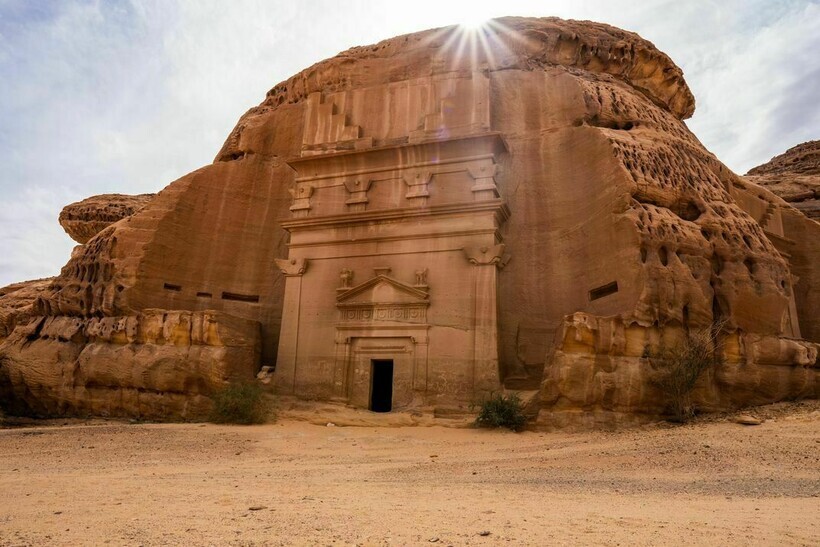
Another indisputable advantage is protection. Nabataeans built fortresses along trade routes. This gave a guarantee security for merchants. The Nabataeans charged a separate fee for this, but For merchants, the deal was profitable. It's much better than hiring army of bodyguards. And the Nabataeans made a caravan route as safe as possible. 
The territory of the Roman Empire is highlighted in yellow. maximum bloom. In red - the Nabataean kingdom, which annexed by Emperor Trajan
According to scientists, one of the main reasons that allowed it was the Nabateans who, among other local tribes, began to rise to control above the water.
The places here are extremely dry. The Nabataeans organized a complex water transportation and storage system, which had no equal. This area is prone to flash floods. The Nabataeans created a well-thought-out system that included the construction of dams, cisterns and aqueducts. And they were able to create an artificial oasis here. Availability permanent source of water and made the Nabataeans the most powerful kingdom in the region. 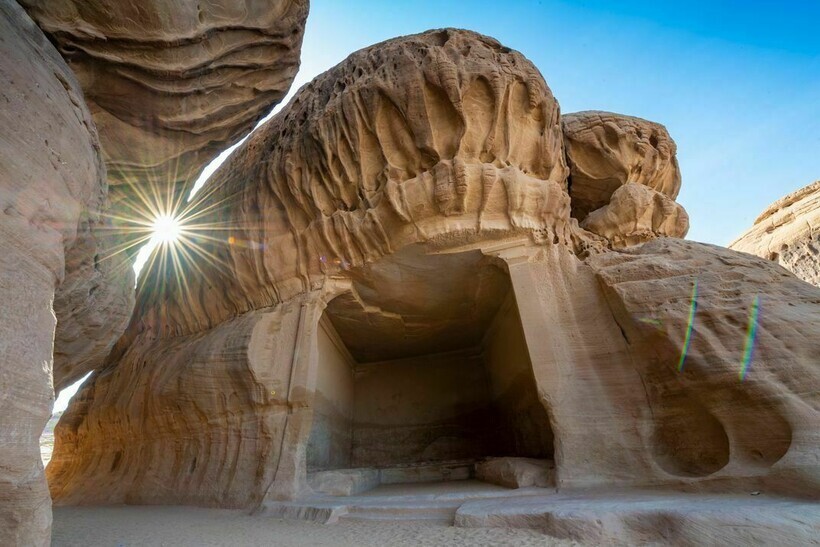
The ancient Greek historian Diodorus Siculus spoke of Nabataeans with great respect. I will give a free paraphrase from his book XIX:
The Nabataeans live in the open air. They claim that their homeland - wilderness. Some of them breed camels, others graze sheep.
They do not like to plant grain and fruit-bearing trees. The Nabataeans do not drink wine and do not build houses. 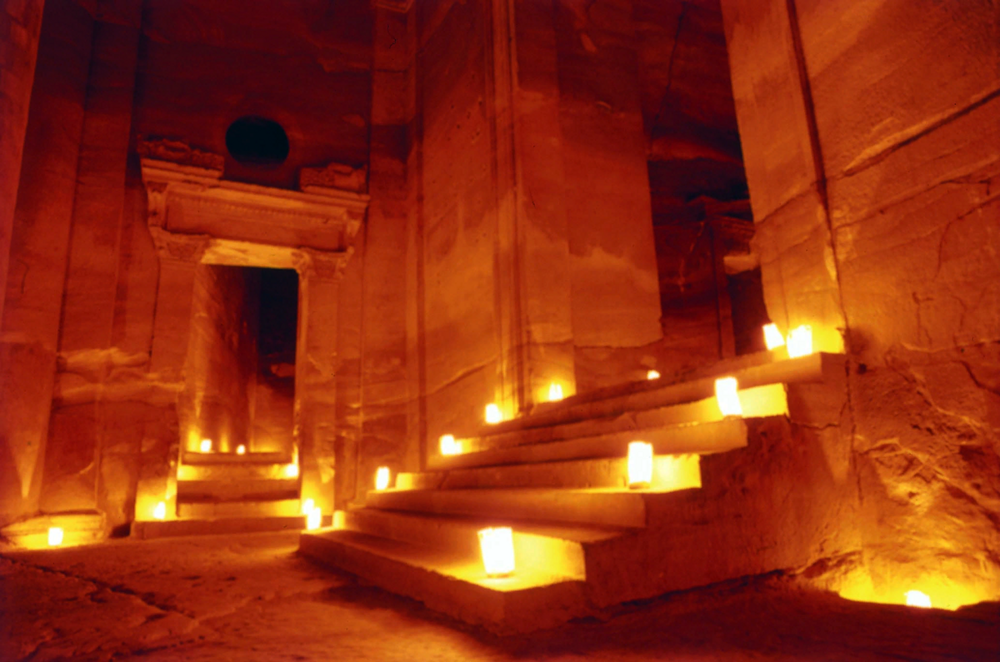
They believe that those who own houses and gardens are strongly take risks. Because there is someone strong who wants to subdue them.
Nabataeans love freedom. And if a strong enemy comes, they hiding in the desert. The desert is their fortress. They go where there is no water and no one can catch up with them. The Nabateans themselves have in advance prepared underground reservoirs with water.
They close these reservoirs and it's impossible outside discover - the door to them is covered with sand. But they mark them with signs which they know well, but are unrecognizable to others.
The main food is meat and milk. From plant foods - very love pepper. And their favorite drink is made from wild honey and water.
Also, the Nabateans were a literate, educated people. WITH considering their profession - quite understandable. It is the need to lead accounting was stimulated in those years by writing. 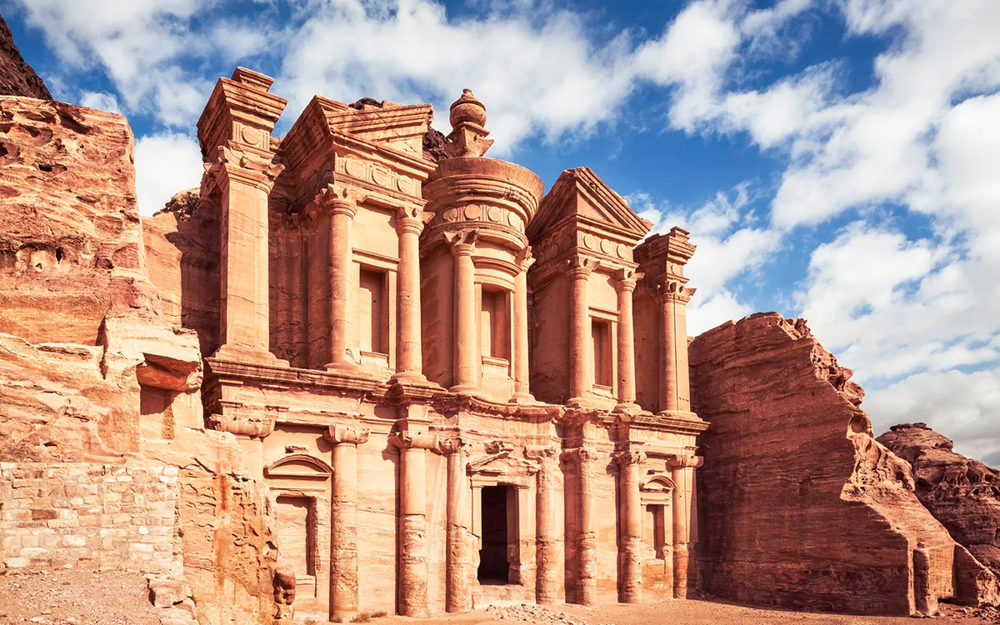
However, over the centuries, the treasures of the Nabataean Empire kept growing. And withbags full of coins, you don’t really run around in the desert. Nabataeans moved to a more sedentary lifestyle and became a vulnerable target.
In 105, Emperor Trajan captured the Nabataean kingdom and annexed to the Roman Empire. Despite the fortresses, the Nabataeans could not to give a worthy rebuff to the Romans, since they lost heavily in strength and combat experience.
Integration into the Roman Empire did not benefit the Nabataeans.
The palm was intercepted by the Syrian city of Palmyra, which began to develop rapidly. Palmyra became the center of trade and began to attract caravans.
In the third century, Hegra and Petra finally fell into decay, as trade routes changed routes. Caravans began to bypass this city side. As a result, the inhabitants of the city left. A strong earthquake in 363 AD finally put an end to these cities. their people left and they became a bright landmark of the ancient world, which has come down to us through the ages.
<img src=" https://cn22.nevsedoma.com.ua/p/26/2650/129_files/09e2000f249f8c880eaf86314469995c.jpg"













